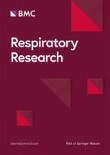Taylor, S.L., Brooks, C.R., Elms, L. et al. Respir Res 26, 209 (2025). https://doi.org/10.1186/s12931-025-03266-x
Abstract
Background
The analysis of sputum is the principal basis for characterising lower airway microbiology in those with chronic respiratory conditions. For such analysis to be informative, samples that poorly reflect the lower airways must be identified and removed. Our cross-sectional study explored the relationship between the quality of sputum samples and their microbiological content. We further investigated the impact of excluding low quality samples on observed microbiota-disease relationships in childhood asthma.
Methods
Induced sputum was collected from children with or without asthma. Sputum quality was assessed according to squamous cell%, cell viability%, detection of sputum plugs, and salivary α-amylase levels.
Sputum microbiota was characterised by 16S rRNA amplicon sequencing and qPCR.Results
 |
| Sputum microbiota differs between asthma (green) and no asthma (purple) following exclusion of poor-quality samples. |
Conclusions
Upper airway contamination of induced sputum samples from children is common. Exclusion of samples based on ≥ 30% squamous cells enables identification of asthma-airway microbiology relationships that are otherwise not apparent.

No comments:
Post a Comment